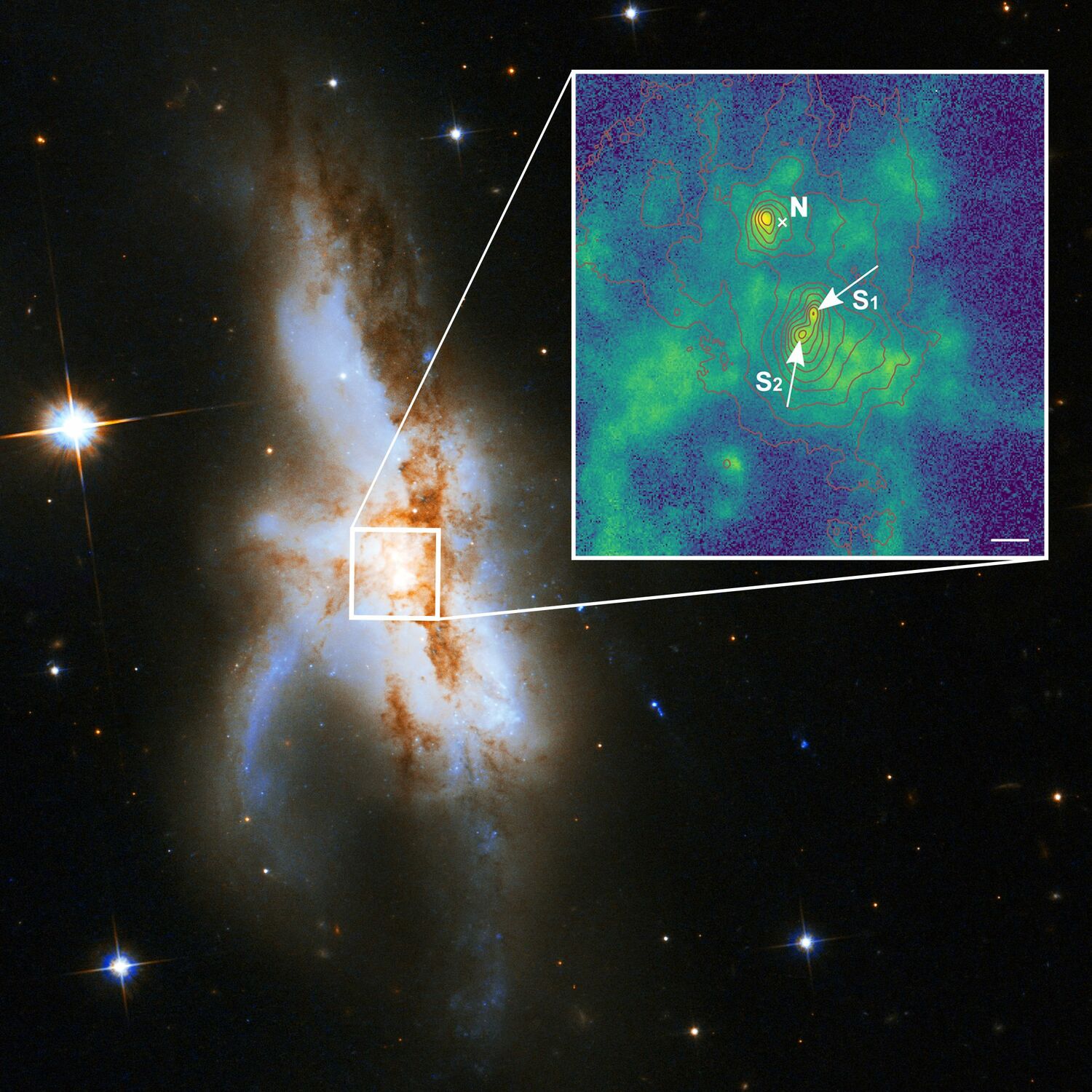University of Göttingen | Liebniz Institute for Astrophysics, Potsdam | 2019 Nov 21
Three supermassive black holes discovered at the core of one galaxy
An international research team led by scientists from Göttingen and Potsdam proved for the first time that the galaxy NGC 6240 contains three supermassive black holes. The unique observations ... show the black holes close to each other in the core of the galaxy. The study points to simultaneous merging processes during the formation of the largest galaxies in the universe.
Massive Galaxies like the Milky Way typically consist of hundreds of billions of stars and host a black hole with a mass of several million up to several 100 million solar masses at their centres. The galaxy known as NGC 6240 is known as an irregular galaxy due to its particular shape. Until now, astronomers have assumed that it was formed by the collision of two smaller galaxies and therefore contains two black holes in its core. These galactic ancestors moved towards each other at velocities of several 100 km/s and are still in the process of merging. The galaxy system which is around 300 million light years away from us – close by cosmic standards – has been studied in detail at all wavelengths, and has so far been regarded as a prototype for the interaction of galaxies...
The discovery of this triple system is of fundamental importance for understanding the evolution of galaxies over time. Until now it has not been possible to explain how the largest and most massive galaxies, which we know from our cosmic environment in the "present time", were formed just by normal galaxy interaction and merging processes over the course of the previous 14 billion years approximately, ie the age of our universe. "If, however, simultaneous merging processes of several galaxies took place, then the largest galaxies with their central supermassive black holes were able to evolve much faster,” Peter Weilbacher summarizes. "Our observations provide the first indication of this scenario.” ...
NGC 6240: A Triple Nucleus System in the Advanced or Final State of Merging ~ W. Kollatschny et al
- Astronomy & Astrophysics (accepted 27 Oct 2019) DOI: 10.1051/0004-6361/201936540
- arXiv.org > astro-ph > arXiv:1910.12813 > 28 Oct 2019 (v1), 15 Nov 2019 (v2)

